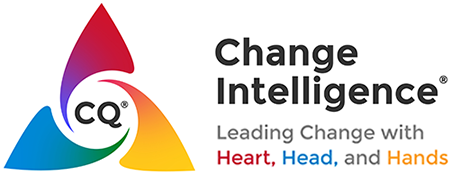Assuming you’re familiar with CQ, let’s take a step back and look at EQ. When introducing the concept to clients for the first time, I often get a response such as, “we base our decisions on logic and facts – we don’t bring our emotions to work.” Or, as one of my more colorful clients, a manufacturing executive explained, “we don’t do that touchy-feely crap!”
But, we’ve all experienced how our preferences don’t always determine our reality – right? After all, anyone who’s even somewhat familiar with brain science knows that “leaving our emotions at the workplace door” is simply not possible: When we experience a sensation (anything from our sense organs – a sight, sound, smell, touch, taste) it first registers in our reptilian brain, then passes to our limbic system (the seat of the emotions), and then travels to our cerebral cortex (our thinking brain).
As much as we might wish it were otherwise, we each bring our whole person to work with us everyday – our bodies and brains, our thoughts and our emotions. And, moreover, we decide how we feel about something first, before we get a chance to process what we think about it!
Yet, the viewpoint expressed by the manufacturing executive is a very common one – and illustrative of the fact that even the most intelligent leaders are misinformed about what EQ really is. As Daniel Goleman, a leader in Emotional Intelligence, teaches us, EQ is not about being “touchy-feely” – it’s about being aware of your feelings, and those of others; EQ is not about being nice all the time – it’s about being honest; and EQ is not about being emotional – it’s about being smart with your emotions.
Just looking at the impact of EQ on overall career success, consider the following:
- EQ alone explains 58% of a leader’s job performance
- 90% of top performers are high in EQ while just 20% of low performers are high in EQ
- EQ is linked to job performance at every level in every industry
And moreover, to get a taste of the profound impact EQ can have on organizational success, when plant supervisors were trained in EQ:
- Lost time accidents were reduced by 50%
- Formal grievances went from 15 per year to 3
- Productivity goals were exceeded by $250,000
You know from being a part of the CQ community that developing Change Intelligence empowers leaders to be more competent and competent in managing change, teams to be more effective in jointly facilitating change, and organizations (as a whole) to more smoothly bring to life successful and sustainable change. But, what about the power of CQ and EQ when used together? This is a question I’m often asked, both from the stage in delivering keynotes and also in working with executives and teams. I believe it’s an important one to explore – since it can accelerate your ability to make an impact and to successfully lead change.
Combining CQ and EQ is a winning approach to equip ourselves and other leaders to meet the increasingly demanding challenges we’re experiencing in today’s workplace. I’ve learned this first hand using a joint approach over the last year at several client organizations.
In addition, I recently taught a guest lecture in the “Leadership Principles and Practices” class at Northwestern University. Since he required reading for the class is both Change Intelligence as well as Goleman’s Primal Leadership, I addressed this question in depth to the graduate students in the class:
How can building our EQ in addition to CQ help us lead change?
Inspire the Heart: High CQ leaders know that we need to connect, communicate, and collaborate with people to design and implement change that sticks. High EQ leaders’ heightened relationship management skills ensure they are better able to do so.
Engage the Brain: High CQ leaders know that we need to make the business case for the change, sharing visions for the future and strategies that paint a picture of how to achieve transformational goals. High EQ leaders are more sensitive in assessing people’s “current state” in terms of their emotional reactions when confronted with a major change, and are more savvy in being able to craft customized messages that paint a more effective line-of-sight from present to future for a wide variety of stakeholders.
Help the Hands: High CQ leaders know that we need to motivate movement to make changes real in the field, to translate lofty strategies to specific tactics people can execute, and provide them the training and tools to do so. High EQ leaders have honed their radar to be in tuned with barriers that are standing in people’s way to altering their behavior and adopting new ways of working, such as fears of loss of skills, status, or security.
Moving to the team level, groups with members high in EQ, which also know their individual Change Leader styles as well as their Team CQ Profile, are better equipped to proactively and openly leverage their strengths, identify and shore-up their blind spots, and give/receive genuine feedback to facilitate true partnerships in leading the change process together.
Leaders with high EQ are more effective at engaging employees, and companies with engaged cultures outperform their counterparts on a wide variety of metrics from profitability to quality to customer satisfaction to turnover. Workplaces with leaders who make a commitment to build CQ and EQ at all levels have a much higher probability of overcoming the dismal 70% failure rate of major change initiatives, and instead, execute transformations that stick – and generate a lasting return on investment.

